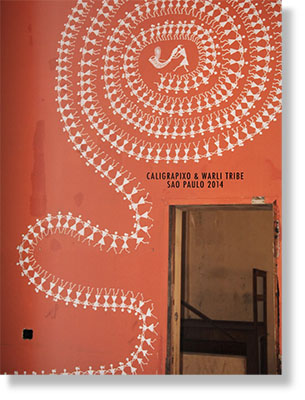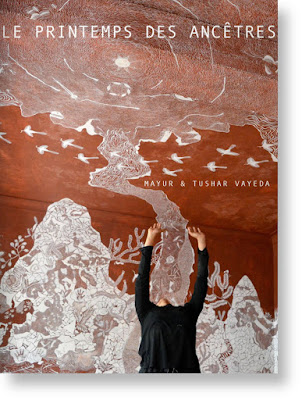
Source India City Blog by Nimi Shasharma
Allegory of unheard Dhongariya Kondh’s (tribal) of Odisha
Under the canopy of Niyamgiri Hills situated in Odisha resides an endangered and unheard group of tribal known to be Dhongariya Kondh. The forests of Rayagada and Kalahandi are home to 8000 tribals. For these tribals, the hills are home to their God Niyam Raja. These hills are situated miles away from the hustle of city, behind the woods. Since generations, these tribal groups are breathing in this fresh air and sustaining on the fruits, vegetables, cultivation and by practicing horticulture. They spend their time together by singing, dancing, chanting old mantras, weaving, knitting and helping each other. They were elated in their own tiny world till Vedanta came into their lives.
> read more
dimanche 29 mars 2020
Allegory of unheard Dhongariya Kondh’s (tribal) of Odisha
samedi 28 mars 2020
The Indispensable Modernist: Francis Newton Souza

Source Livemint by Vivek Menezes
Precisely 18 years ago, the tumultuous and meteoric life of Francis Newton Souza came to an end. The great Indian modernist had been based in New York for decades but died on 28 March 2002 while visiting Mumbai, the beloved city of his youth and initial ascent to notoriety. He was buried two days later,with only a handful of witnesses, and no family members in attendance. The rest of the world barely paid any attention at all. Writing in the Deccan Herald a fortnight later, the poet and editor Adil Jussawalla was white-hot angry about what he called “the near-indifference to his death, the mealy-mouthed praise". He wrote: “I’m shocked. He was more than a friend. Surely there’s little doubt he was one of our greatest painters." Jussawalla pointed back to the artist’s A Fragment Of An Autobiography, first published to great acclaim in England in 1955, then republished in India, writing, “Hardly anyone in a city which buys, sells and talks art all the time and which has pretensions to be one of the art’s international capitals, seems to have been interested in buying the book since copies can be bought off one of the city’s pavements at ₹10 each." He quoted this unforgettable passage: “I was a rickety child with running nose and running ears, and scared of every adult and every other child. Better had I died. Would have saved me a lot of trouble. I would not have had to bear an artist’s tormented soul, create art in a country that despises her artists and is ignorant of her heritage." Concluded Jussawalla, “It’s something I read with great bitterness now."
> read more
samedi 14 mars 2020
One World Through Art: A Review of Modernisms at the Block Museum
Source Newcityart by Chris Miller
Sixty years ago, Abby Weed Grey began traveling to Iran, Turkey and northern India to collect art. A childless, recently widowed St. Paul housewife, she used her late husband’s small fortune to establish a foundation for “the encouragement of art through the assembling of international collections of art for cultural exchange programs.” Such a project may have been inspired by the tours of “New American Paintings” throughout Europe, sponsored by the CIA in the late 1950s. She focused on Middle Eastern artists who were “breaking with the past to cope with the present,” much like modern artists in Europe and America had been doing for half a century. It does not appear that she had any aesthetic or ideological requirements—except that, like the mainstream art world of her day and ours, she must have considered beauty, naturalism and idealism to be outdated relics from another era.
> read more
lundi 9 mars 2020
Home of Warli Adivasi revolt, Talasari’s loyalty to the Left deepens

Source The Indian Express by Kavitha Iyer
There is no memorial at the banyan tree around which the Warli Adivasi Revolt of 1945 began in Talasari taluka’s Zari village. Nearly 5,000 indentured tribals who gathered here from Thane, Vikramgad, Dahanu and Palghar had refused to work on landlords’ fields until they received 12 annas a day in wages, their resistance sowing the first seeds of rights-based movements among the region’s indigenous communities. Today, the younger generation in Zari, 150 km from Mumbai, has no more than a faint acquaintanceship with their ancestors’ historic struggle but a blend of that history and contemporary circumstances keeps Talasari’s adivasis loyal to those who led that revolt, the Communist Party and the All India Kisan Sabha.
> read more
jeudi 5 mars 2020
Delhi: This new show celebrates legendary works by SH Raza and Akbar Padamsee

Source Architectural Digest by Uma Nair
Rare artworks by the masters are not just precious pieces of possession—they are also timeless assets, things that can be cherished for generations to come. Nishad Avari, Specialist, Head of Sale | Associate Vice President, South Asian Modern + Contemporary Art at Christie’s writes in from New York to comment on this epic exhibition at Vadehra Art Gallery: “Two of India’s greatest modern artists, Sayed Haider Raza and Akbar Padamsee always approached their respective practices with deep thought and intense focus, constantly pushing boundaries and innovating their unique visual vocabularies. Till their very last years, both artists continued to paint tirelessly, and are survived by impressive and diverse bodies of work. ”
> read more
mercredi 4 mars 2020
India’s indigenous modernist: Jyoti Bhatt

Source Times of India by Uma Nair
Bhatt’s vast documentation of rural India brought him into the web exploring folk, tribal and rural arts-his stint in photography to document India’s indigenous tribes and arts in its villages brought him close to traditional art, culture and rituals. Traditions in rural rhythms led him into a journey of a lifetime. The imagery drawn from the popular and from tribal and folk juxtaposed with artistic intervention developed over the years became his leitmotif. These symbols of religious, social and cultural importance became a tool to comment on the change and transformation in society. Soft sarcasm and soothing seductive satire aided his narratives. Identity and the hybridisation of the lived everyday idiom became his insignia. At the Bihar Museum in Patna, art lovers regaled over his contours, the expression emanating an enchanting journey of 60 years in printmaking. Happy Birthday Jyoti Bhai.
> read more
mardi 3 mars 2020
Archives revue de presse
-
▼
2020
(99)
-
▼
mars
(7)
- Allegory of unheard Dhongariya Kondh’s (tribal) of...
- The Indispensable Modernist: Francis Newton Souza
- One World Through Art: A Review of Modernisms at t...
- Home of Warli Adivasi revolt, Talasari’s loyalty t...
- Delhi: This new show celebrates legendary works by...
- India’s indigenous modernist: Jyoti Bhatt
- In Conversation with Shine Shivan
-
▼
mars
(7)



















